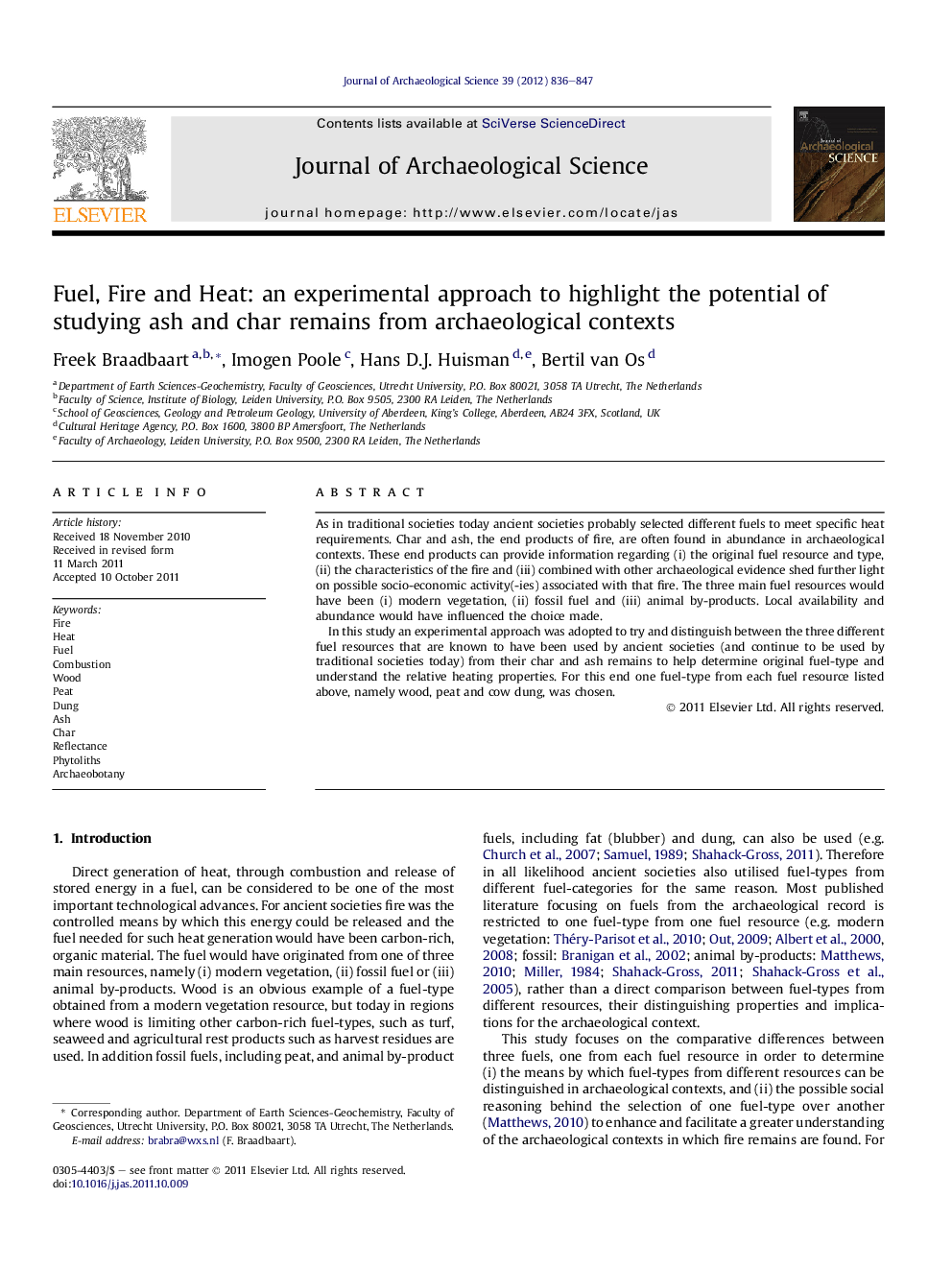| Article ID | Journal | Published Year | Pages | File Type |
|---|---|---|---|---|
| 1035577 | Journal of Archaeological Science | 2012 | 12 Pages |
As in traditional societies today ancient societies probably selected different fuels to meet specific heat requirements. Char and ash, the end products of fire, are often found in abundance in archaeological contexts. These end products can provide information regarding (i) the original fuel resource and type, (ii) the characteristics of the fire and (iii) combined with other archaeological evidence shed further light on possible socio-economic activity(-ies) associated with that fire. The three main fuel resources would have been (i) modern vegetation, (ii) fossil fuel and (iii) animal by-products. Local availability and abundance would have influenced the choice made.In this study an experimental approach was adopted to try and distinguish between the three different fuel resources that are known to have been used by ancient societies (and continue to be used by traditional societies today) from their char and ash remains to help determine original fuel-type and understand the relative heating properties. For this end one fuel-type from each fuel resource listed above, namely wood, peat and cow dung, was chosen.
► To generate heat ancient societies used various fuel resources with different properties. ► Heat generated from three fuel resources, wood, peat and cow dung, were measured and the resultant ash and char collected. ► The properties of these remains helps the identification of the original fuel resources. ► Applying these findings to archaeological situations further insights into fuel selection can be determined.
